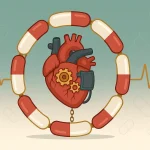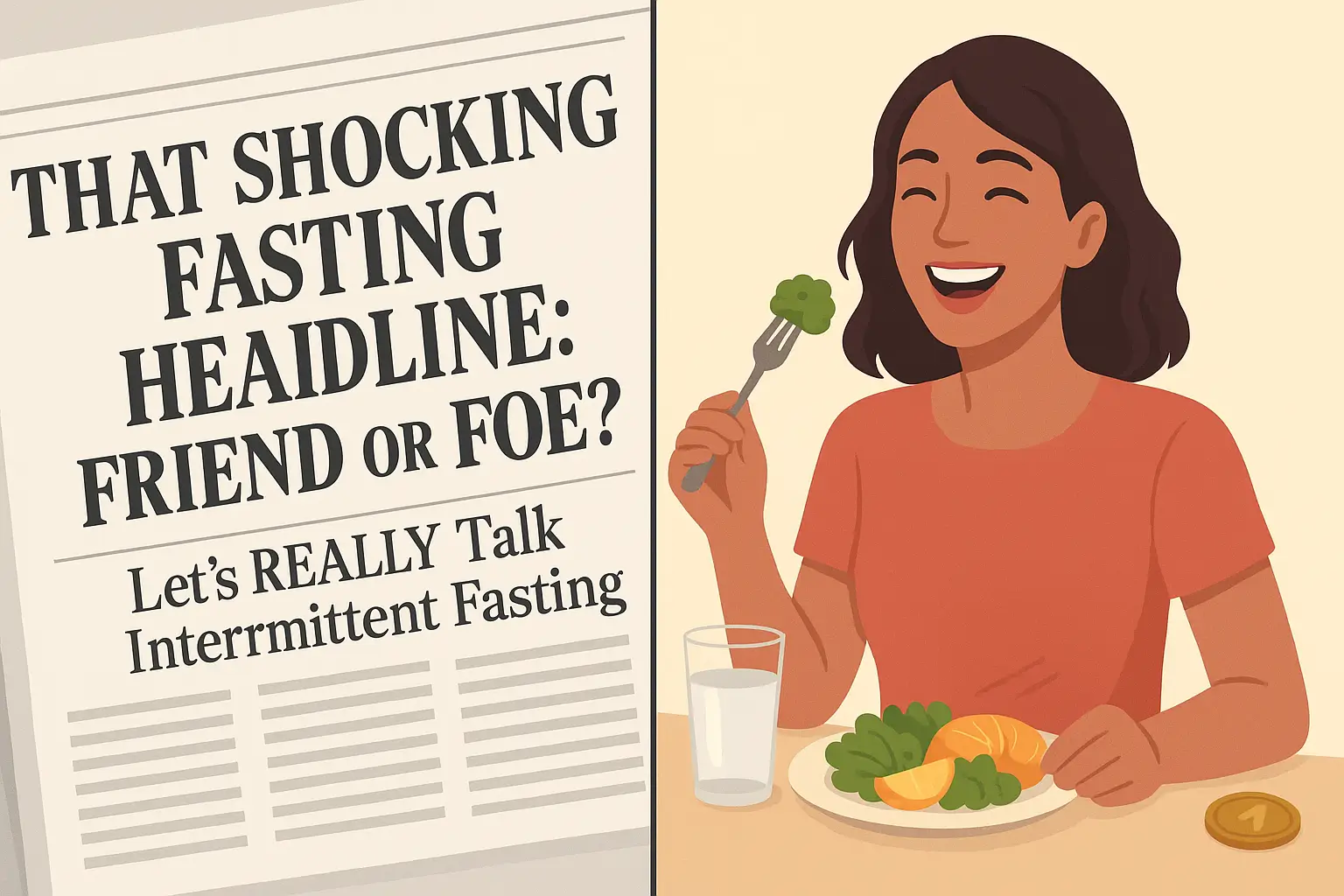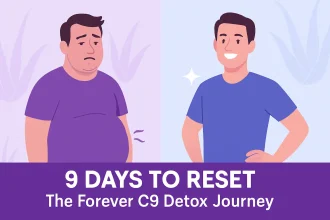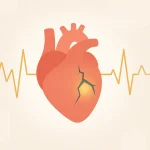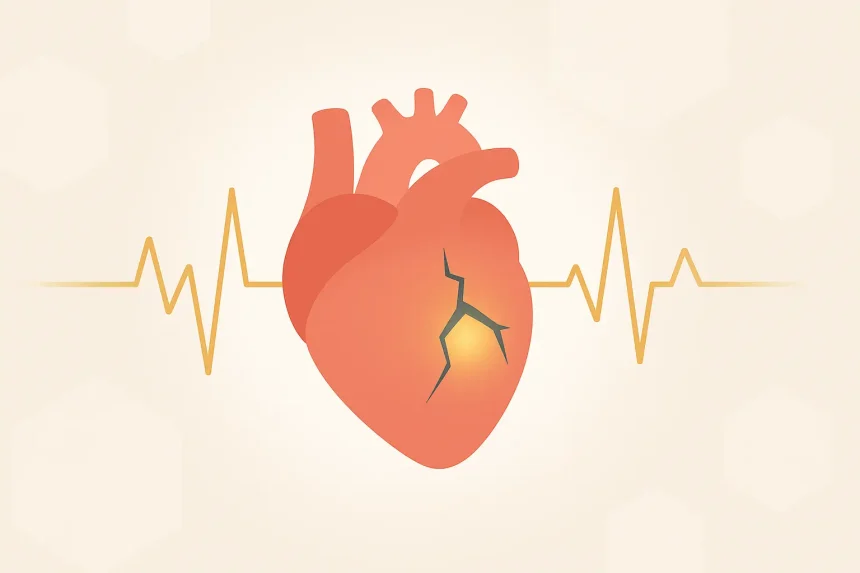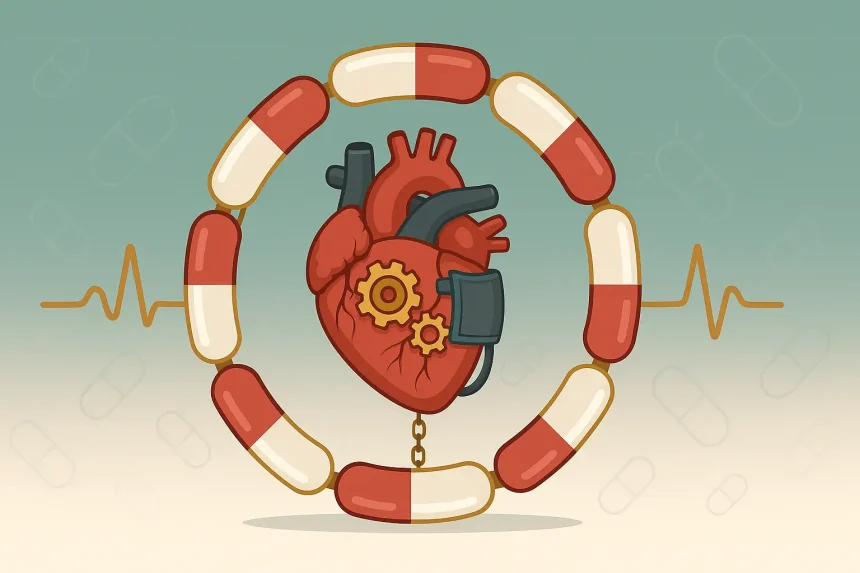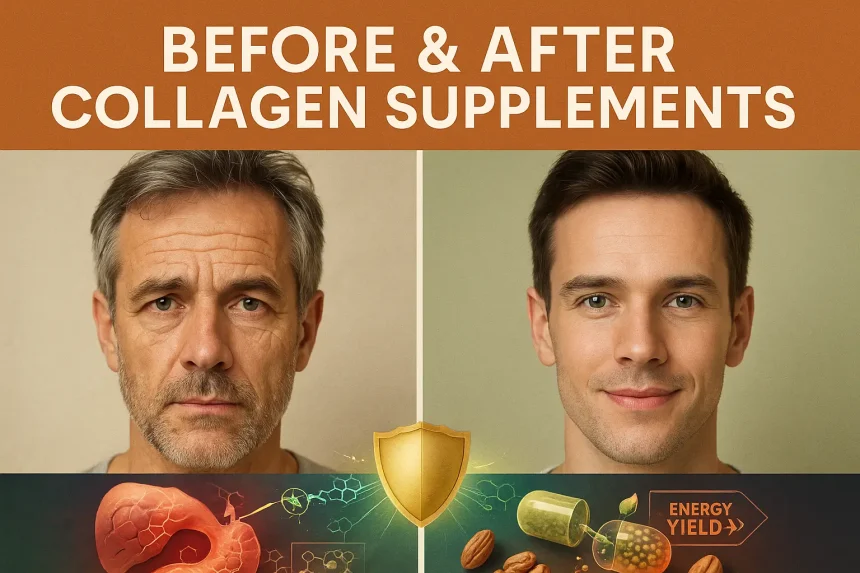Okay, let’s talk. You probably saw the headlines blowing up your newsfeed back in March 2024.
- Hold On! That AHA Study Isn’t What You Think (Correlation vs. Causation 101)
- The “Healthy User” (or Unhealthy User) Problem in Intermittent Fasting Studies
- Does Intermittent Fasting Even Make Sense Biologically? (Hint: Yes!)
- Let’s Talk Numbers: That 91% Risk Increase Seems… Wildly Implausible
- The Mountain of Bad Data Fallacy
- Okay, So What IS Intermittent Fasting, Really? Let’s Define It.
- Finding Your Rhythm: Popular Intermittent Fasting Schedules & Methods
- Beyond Weight Loss: The Science-Backed Intermittent Fasting Benefits
- Ready to Try? How to Start Intermittent Fasting Safely & Effectively
- Step 1: Choose Your Starting Method
- Step 2: Define Your Windows Clearly
- Step 3: Master the Fasting Window
- Step 4: Plan Your Eating Window (Crucial!)
- Step 5: Listen Intently to Your Body
- General Intermittent Fasting Rules & Tips:
- Important Considerations: Intermittent Fasting for Women & Who Should Be Cautious
- Who Should AVOID Intermittent Fasting or Consult a Doctor FIRST:
- Why Might Someone Stop Intermittent Fasting?
- Beyond the Hype: Making Intermittent Fasting a Sustainable Part of a Healthy Lifestyle
- Your Health Journey, Your Choice: The Final Word on Intermittent Fasting
Stuff like, “Skipping Breakfast Linked to 91% Higher Risk of Heart Death!” – quoting the American Heart Association (AHA), no less.
Yikes, right?
If you’ve been curious about intermittent fasting, or maybe even trying it, that kind of news can hit like a ton of bricks.
It makes you wonder… is this whole intermittent fasting thing actually dangerous?
Did we all get duped?
Hold on a second. Before you ditch your intermittent fasting schedule and run for the nearest donut, let’s take a deep breath together.
Because there’s a HUGE difference between a scary headline and what the science actually says.
And frankly, the way this whole thing was presented was… well, let’s just say it deserves a closer look. A much closer look.
My name is Lusabara, and we live and breathe health and wellness here at Vitaleap and I’m passionate about products that support a vibrant life.
More importantly, I believe in TRUTH. Especially when it comes to your health.
So, we’re going to unpack that AHA news, piece by piece.
We’ll explore what intermittent fasting really is, look at the actual science behind intermittent fasting benefits, and figure out how you can approach it safely and effectively.
Think of this as your clear, no-nonsense guide to understanding intermittent fasting in the real world.
Ready? Let’s clear the air.
Hold On! That AHA Study Isn’t What You Think (Correlation vs. Causation 101)
So, what exactly did that AHA abstract say?
It suggested that people who limited their eating window to less than 8 hours a day (a common intermittent fasting 16/8 pattern) had a correlation with a 91% higher risk of cardiovascular death compared to those eating over 12-16 hours.
Sounds pretty damning on the surface.
But here’s the million-dollar word: Correlation.
This study only showed a link, an association. It did NOT prove that fasting causes heart problems.
This is Statistics 101, folks. Seriously basic stuff.
Think about it like this…
Ice cream sales are strongly correlated with drowning deaths.
Does that mean eating ice cream makes you drown? Of course not!
It means a third factor – hot weather – causes both more ice cream eating and more swimming (leading to more drowning accidents).
Ice cream is linked to drowning, but it doesn’t cause it. Big difference.
The AHA press release, unfortunately, jumped from “linked to” (correlation) straight to implying “may raise the risk” (causation).
That’s not just sloppy; it’s misleading.
Why This Matters: To prove fasting causes heart disease, you need a specific type of study: a Randomized Controlled Trial (RCT).
RCTs randomly assign people to either fast or not fast, then compare the outcomes. This eliminates a lot of the guesswork.
This AHA abstract wasn’t an RCT. It was observational, looking back at existing data.
And that kind of data is notoriously tricky.
Want to geek out on study types?
The National Library of Medicine offers great explanations on observational studies vs. randomized controlled trials. Understanding this difference is key to not getting fooled by headlines!
What does “correlation doesn’t equal causation” mean in health news?
It means just because two things happen together (like a dietary pattern and a health outcome in a large group) doesn’t automatically mean one caused the other. There could be many other hidden factors influencing the result. Always look for studies designed to show cause, like RCTs, before drawing strong conclusions.
The “Healthy User” (or Unhealthy User) Problem in Intermittent Fasting Studies
There’s another huge issue with studies like this, something called “Healthy User Bias.”
Or, in this case, it might be the opposite.
Let me explain.
For years, observational studies showed women taking Hormone Replacement Therapy (HRT) had much lower rates of heart disease.
Doctors thought HRT protected the heart. Makes sense, right?
Wrong.
When they finally did proper RCTs (like the Women’s Health Initiative), they found HRT didn’t broadly protect the heart and even carried some risks.
So, why the difference? Healthy User Bias.
The women choosing to take HRT back then were often healthier to begin with. They saw doctors regularly, followed health advice, ate well, exercised…
It wasn’t the HRT protecting them; it was their overall healthier lifestyle correlated with taking HRT.
We see the same thing with vitamin supplements. Lots of studies link vitamin takers to better health.
But RCTs generally don’t show major benefits from multivitamins for preventing disease in the general population.
Why? People who proactively take vitamins often have other healthy habits too.
Now, let’s apply this to the intermittent fasting study.
The data was collected from 2003 to 2018.
Think back. What was the standard health advice then?
Eat 6 small meals a day! Never skip breakfast! Snacks are essential!
Intermittent fasting for health wasn’t mainstream like it is today. Google Trends shows interest barely budged until around 2017.
So, who was skipping meals or eating in short windows before 2017?
Likely NOT the super health-conscious crowd following doctor’s orders.
Instead, that group might have included:
- People working difficult shift jobs with erratic eating patterns.
- People with lower incomes struggling to afford regular meals.
- People with existing health issues affecting appetite (like cancer).
- People with undiagnosed eating disorders.
- Maybe smokers or heavy drinkers who often skip meals.
See the problem?
The group labeled “fasting” in this study (especially pre-2017) was likely, on average, less healthy to begin with for reasons completely unrelated to their eating schedule.
They might have had higher rates of smoking, drinking, poverty, or underlying illness – all major risk factors for heart disease.
So, the study found a correlation between this less healthy group (who also happened to eat in shorter windows) and heart disease.
It does NOT mean the eating window caused the heart disease.
It’s far more likely that pre-existing unhealthiness caused the heart disease, and that group also happened to have erratic eating patterns mistaken for intentional intermittent fasting.
To suggest people were healthily practicing intermittent fasting en masse back in 2005 is just… not accurate.
So, observational studies on diet are useless?
Not useless, but they need careful interpretation! They can generate hypotheses (ideas to test) but rarely provide definitive proof of cause and effect. They are prone to confounding factors (like the healthy user bias) that RCTs are better designed to handle. Think of them as clues, not convictions.
Does Intermittent Fasting Even Make Sense Biologically? (Hint: Yes!)
Let’s step back from the confusing studies for a moment and use some common sense.
Think about human history.
Did our ancestors have neatly packed lunches and scheduled snack breaks every day?
Heck no!
For millennia, humans ate when food was available and fasted when it wasn’t. Our bodies evolved to handle periods without food.
We store energy from food primarily as glucose (in liver and muscles) and body fat.
When you eat, you store energy.
When you don’t eat (fasting), your body switches gears and starts using that stored energy. First the glucose, then the fat.
That’s it. It’s a natural, normal metabolic process.
Does it make any sense that our bodies would be designed so poorly that simply not eating for 16 hours would shred our hearts?
If that were true, how did humans survive and thrive for thousands of years before the invention of the fridge and 24/7 food access?
Ancient cultures, like the Greeks, even revered fasting for its health benefits. Were they all secretly damaging their hearts? Unlikely.
Intermittent fasting isn’t some weird, unnatural fad. It’s tapping into a built-in physiological system.
When you have too much stored energy (like excess body fat or high blood sugar in type 2 diabetes), allowing your body to burn through those stores via fasting can actually be incredibly beneficial.
It’s not about starvation; it’s about giving your body a break from constant digestion and letting it perform its natural cleanup and energy-burning processes.
Curious about the science of switching fuel sources?
Check out this review on Metabolic Switching in the New England Journal of Medicine. It explains how our cells adapt during fasting periods.
Let’s Talk Numbers: That 91% Risk Increase Seems… Wildly Implausible
Okay, back to that AHA abstract number: a 91% increased risk of heart death from an 8-hour eating window (intermittent fasting 16/8 style).
Let’s put that in perspective.
That’s roughly the same level of risk increase associated with having diagnosed diabetes!
Diabetes is a massive, well-established risk factor for heart disease, driven by complex metabolic changes over years.
Are we seriously supposed to believe that simply shifting your meal times – eating breakfast at 9 AM and dinner by 5 PM – is as dangerous for your heart as a major metabolic disease like diabetes?
And that all the scientists in the world somehow missed this colossal risk factor hiding in plain sight for centuries?
It just doesn’t pass the sniff test. It’s wildly improbable.
What about eating over 8-10 hours? Say, breakfast at 9 AM, dinner at 7 PM.
The abstract suggested this correlated with a 66% increased risk!
Think about the 1970s or 80s. Most people ate three meals a day within roughly that timeframe, without constant snacking or late-night eating.
Did that entire generation have a massively elevated risk of heart disease because of their meal timing? It defies logic.
Such huge effect sizes from a simple observational study almost always point to one thing: confounding variables.
The groups being compared (short eaters vs. longer eaters) were likely very different in many other ways (health status, lifestyle habits, income, etc.), and those differences, not the eating window itself, were driving the results.
It’s like comparing Olympic athletes to sedentary office workers on some health measure. You’ll find differences, but you can’t pin it all on the one factor you’re looking at (like their breakfast time) while ignoring their vastly different lifestyles.
If the numbers seem off, why publish it?
Research abstracts presented at conferences often contain preliminary findings that haven’t yet undergone rigorous peer review or publication in a journal. Sometimes, surprising or controversial findings get highlighted for discussion, even if they are based on weak evidence (like correlation without established causation) or have limitations that need further investigation. Unfortunately, these nuances often get lost in media headlines.
The Mountain of Bad Data Fallacy
There’s a temptation in science sometimes…
If you don’t have good data (like from an RCT proving causation), maybe getting a whole lot of bad data (like observational correlations) will somehow make it good?
Think about it: If you have a pile of rotten cabbage, will getting several tons of rotten cabbage magically turn it into fresh, delicious cabbage?
No. It’s just a bigger pile of rotten cabbage.
If you need an Olympic basketball team but can only find recreational league players, will recruiting 200 rec league players equal one team of elite athletes?
Nope. It’s just a lot of non-elite players.
Similarly, piling up dozens of correlational studies, all potentially suffering from the same biases and limitations, doesn’t magically transform them into proof of causation.
Lots of potentially flawed data doesn’t equal solid proof.
Correlation can sometimes point towards causation, but it’s vastly more likely to be just… correlation.
Think about drowning deaths again.
- Causal factors (things that directly influence drowning): Wearing a life jacket (reduces risk), number of people swimming (increases potential incidents), alcohol use while swimming (increases risk). These are few and direct.
- Correlational factors (things linked but not causing): Ice cream sales, people wearing shorts, deodorant sales, hotel occupancy rates, restaurant revenues, sunscreen sales… the list is practically infinite!
Most correlations are just noise, statistical echoes of complex life, not direct cause-and-effect relationships.
So why the big splash with the AHA abstract?
Maybe it was genuine scientific curiosity (though the flaws seem obvious).
Or maybe… just maybe… someone realized a headline linking a popular trend like intermittent fasting to a scary outcome like “91% increased heart death risk” would generate massive clicks and media attention.
Generating fear gets clicks. Unfortunately, it can also mislead people and potentially scare them away from exploring lifestyle changes that could actually benefit their health, when done correctly and based on solid evidence.
And that bothers me. Because the real science on intermittent fasting, when you look beyond this one flawed abstract, tells a very different story.
Recap of Why That AHA Abstract is Likely Misleading:
- Correlation is NOT Causation: The most fundamental error.
- Healthy User Bias (in Reverse): The “fasting” group in the study period was likely less healthy overall for other reasons.
- Implausible Effect Size: The huge risk increase reported doesn’t align with biological reality or other known risk factors.
- Lots of Bad Data ≠ Good Data: Observational data has inherent limitations that aren’t overcome by quantity alone.
- Infinite Correlations, Few Causations: Most links are coincidental, not causal.
Now that we’ve cleared away the confusion from that headline, let’s dive into what intermittent fasting actually is and what the credible science says about its potential impacts.
Okay, So What IS Intermittent Fasting, Really? Let’s Define It.
Alright, we’ve debunked the scary headline. Now, let’s get clear on the intermittent fasting meaning.
It’s simpler than you might think.
Intermittent fasting isn’t a diet in the traditional sense – it doesn’t strictly dictate what you eat.
Instead, it’s an eating pattern.
It’s about when you eat, creating cycles between periods of voluntary eating and periods of voluntary fasting.
Think of it as scheduling your meals within a specific timeframe each day or week.
Your body naturally cycles between fed and fasted states anyway. IF just structures this cycle more intentionally.
During your eating window, you consume your daily nutrition.
During your fasting window, you abstain from calorie-containing foods and drinks, allowing your body to rest from digestion and tap into stored energy.
Why is this potentially beneficial?
Remember our ancestors? Their bodies were well-adapted to periods without food.
This “metabolic switching” – shifting from burning glucose from food to burning stored fat – is a natural process.
Intermittent fasting helps facilitate this switch more regularly.
Instead of constantly running on fuel from your last meal or snack, you give your body a chance to:
- Burn stored fat for energy.
- Initiate cellular cleanup processes (more on that later!).
- Give your digestive system a break.
- Potentially improve insulin sensitivity.
It’s not about starvation or deprivation in the negative sense. It’s about working with your body’s natural rhythms.
It’s about working with your body’s natural rhythms. Supporting your body’s systems during this process is key. For instance, maintaining good digestive health helps you get the most nutrients from your food when you are eating. Many find incorporating…

Forever Aloe Vera Gel®
Many find incorporating into their daily routine during their eating window helps support healthy digestion and nutrient absorption, complementing their overall wellness goals.
The journal Cell Metabolism published a great overview called “When to Eat” discussing the importance of timing in nutrition and metabolism, highlighting the principles behind IF.
What is the basic rule for intermittent fasting?
The core rule is to divide your day or week into distinct periods for eating and fasting, and only consume calories during the designated eating window. During the fasting period, you typically stick to non-caloric beverages like water, black coffee, or plain tea. The specific timing depends on the method you choose.
Finding Your Rhythm: Popular Intermittent Fasting Schedules & Methods
One of the great things about intermittent fasting is its flexibility. There isn’t just one way to do it.
You can choose an intermittent fasting schedule that best fits your lifestyle, preferences, and goals.
Let’s break down some of the most common approaches:
- The 16/8 Method (Leangains):
- What it is: This is arguably the most popular method. You fast for 16 hours each day and restrict your eating to an 8-hour window. For example, you might eat between 12 PM and 8 PM, and fast from 8 PM until 12 PM the next day.
- Why it’s popular: It’s relatively easy to adapt to social schedules (you can still have lunch and dinner). Many people find skipping breakfast or delaying it is the easiest way to achieve the 16-hour fast. This is often considered the best intermittent fasting for weight loss for beginners due to its sustainability.
- Keywords: intermittent fasting 16/8, 16 8 intermittent fasting, intermittent fasting 16 8 all refer to this method.
- The 5:2 Diet:
- What it is: You eat normally for 5 days of the week. On the other 2 (non-consecutive) days, you significantly restrict your calorie intake, typically to around 500-600 calories.
- Considerations: Requires calorie counting on fasting days, which some find cumbersome. The “fasting” here isn’t a complete fast from food, but a severe restriction.
- Eat Stop Eat:
- What it is: Involves a full 24-hour fast once or twice per week. For example, you might finish dinner on Monday and not eat again until dinner on Tuesday.
- Considerations: Can be more challenging mentally and physically than shorter daily fasts. Requires careful planning.
- Alternate-Day Fasting (ADF):
- What it is: You alternate between days of normal eating and days of complete fasting (or very low calories, similar to 5:2).
- Considerations: This is one of the more intense forms of IF and can be difficult to maintain long-term. Research often uses this model, but it might not be practical for everyone.
- The Warrior Diet (20/4):
- What it is: Involves a long daily fast of about 20 hours, with a 4-hour eating window, typically in the evening. Often emphasizes whole, unprocessed foods during the eating window.
- Considerations: A more extreme version of daily time-restricted eating.
- Spontaneous Meal Skipping:
- What it is: Less structured. You simply skip meals occasionally when you’re not hungry or it’s convenient (e.g., skipping breakfast one day, skipping lunch another).
- Considerations: More intuitive, less rigid, but might not provide the consistent fasting stimulus of more structured methods.
How to Choose?
There’s no single “best” method. The best intermittent fasting for weight loss or health benefits is the one you can stick with consistently.
- The 16/8 method is often the easiest entry point.
- Consider your work schedule, social life, and personal preferences.
- Start slowly and see how your body responds.
Note
While we don’t endorse specific ones, searching for an intermittent fasting app (free intermittent fasting app or paid versions) can be helpful. Many offer timers, tracking features, and reminders to help you stick to your chosen intermittent fasting schedule. Some even function as a basic intermittent fasting calculator for your windows.
Is it better to fast for 12 or 16 hours?
Both offer benefits! A 12-hour overnight fast (e.g., 7 PM to 7 AM) is a great starting point and aligns with natural circadian rhythms. Many of the more pronounced intermittent fasting benefits (like deeper autophagy and potentially more significant fat burning) are thought to become more active after the 12-hour mark, making the 16-hour fast (16/8 method) very popular. Listen to your body and start where you feel comfortable.
How do you do intermittent fasting?
- Choose your method: Decide on a schedule (e.g., 16/8, 5:2).
- Define your windows: Set specific times for eating and fasting.
- During the fasting window: Consume only non-caloric beverages (water, black coffee, plain tea).
- During the eating window: Eat your normal, healthy meals. Focus on nutrient-dense foods.
- Stay hydrated: Drink plenty of water throughout the day.
- Listen to your body: Adjust as needed. Start slowly.
What is the best time for intermittent fasting?
Consistency is more important than the exact timing. However, some research suggests aligning your eating window with daylight hours (e.g., eating earlier in the day and fasting overnight) may offer additional benefits due to circadian rhythms. For 16/8 intermittent fasting, common windows are 12 PM – 8 PM or 10 AM – 6 PM. Choose what works best for YOUR daily routine and allows you to be consistent.
Beyond Weight Loss: The Science-Backed Intermittent Fasting Benefits
Okay, let’s get to the good stuff. Why are so many people interested in intermittent fasting beyond just those misleading headlines?
Because credible research does point towards a range of potential health benefits. Let’s unpack them:
- Weight Management and Fat Loss:
- How it works: IF can help you consume fewer calories overall simply by limiting your eating time. More importantly, during the fasted state, insulin levels drop significantly. Low insulin signals your body to start burning stored fat for energy. IF can also slightly boost your metabolism via hormonal changes (like increased norepinephrine).
- The Evidence: Numerous studies show that intermittent fasting is an effective tool for weight loss, comparable in results to traditional continuous calorie restriction, but often found easier to adhere to by participants. It seems particularly effective at targeting visceral fat (the dangerous fat around your organs). This makes it a strong contender for the best intermittent fasting for weight loss strategy for many.
- (Resource): A 2017 review in the Annual Review of Nutrition titled “Metabolic Effects of Intermittent Fasting” provides a comprehensive overview of its effects on weight and metabolism.
- Improved Insulin Sensitivity & Blood Sugar Control:
- How it works: By giving your body breaks from processing food, IF can help lower baseline insulin levels and improve your cells’ sensitivity to insulin. This means your body can manage blood sugar more effectively.
- The Evidence: Studies suggest IF can significantly reduce insulin resistance, lowering the risk of type 2 diabetes. For those already managing diabetes (type 2), it can be a powerful tool (under medical supervision, of course!).
- (Resource): Research published in Cell Metabolism has shown benefits of early time-restricted feeding (a form of IF) on insulin sensitivity in prediabetic men.
- Cellular Cleanup (Autophagy):
- How it works: During fasting, your body initiates a cellular “waste removal” process called autophagy. Essentially, cells clean out damaged components and regenerate newer, healthier ones. Think of it as cellular spring cleaning.
- The Evidence: Autophagy is linked to longevity and protection against various diseases in animal studies. While human research is ongoing, activating autophagy is considered a major potential benefit of IF for long-term health and potentially slowing aging processes.
- (Resource): The 2016 Nobel Prize in Physiology or Medicine was awarded to Yoshinori Ohsumi for his discoveries of mechanisms for autophagy, highlighting its biological importance. You can read about it on the Nobel Prize website.
- Brain Health & Cognitive Function:
- How it works: IF may benefit the brain by reducing oxidative stress and inflammation, improving blood sugar control (which impacts brain function), and potentially increasing levels of a brain hormone called Brain-Derived Neurotrophic Factor (BDNF). Low BDNF is linked to depression and other brain issues.
- The Evidence: Animal studies show IF can protect against neurodegenerative diseases. Human studies are emerging, suggesting potential benefits for memory and cognitive function.
- (Resource): A review in Nature Reviews Neuroscience discusses “Energy metabolism and the brain” exploring links between metabolic health (influenced by diet/fasting) and brain function.
- Heart Health (Yes, Really!):
- How it works: Despite that flawed AHA abstract, credible research suggests IF may improve several risk factors for intermittent fasting heart disease. This includes potentially lowering blood pressure, improving cholesterol levels (LDL and triglycerides), reducing inflammatory markers, and improving blood sugar control – all crucial for cardiovascular health.
- The Evidence: Various human trials and reviews indicate positive effects of different IF protocols on heart health markers. The key is looking at well-designed studies (often RCTs) focusing on causal links, not just flawed correlations.
- (Resource): A systematic review and meta-analysis published in the Journal of the American Heart Association (JAHA) (ironically!) found that IF showed promise for improving some cardiometabolic health parameters (Link to a similar review, check for latest). Always look for recent, high-quality reviews and RCTs.
- Potential Longevity Benefits:
- How it works: By influencing factors like autophagy, insulin sensitivity, and oxidative stress, IF might contribute to a longer, healthier lifespan.
- The Evidence: Much of the strong evidence comes from animal studies (yeast, worms, mice), showing lifespan extension. Human evidence is indirect, focusing on improving health markers associated with longevity.
- Simplicity and Convenience:
- How it works: For some, IF simplifies their day. Fewer meals to plan, prepare, and clean up after can free up time and mental energy.
- The Evidence: This is subjective, but many people report finding IF easier to stick to than constant calorie counting, making it a sustainable lifestyle change.
Does intermittent fasting work?
Yes, the evidence strongly suggests intermittent fasting does work for many people across various health goals, particularly weight management, improved metabolic health, and potentially cellular health.
However, “work” depends on individual factors, consistency, the quality of diet during eating windows, and whether it’s the right fit for one’s lifestyle and health status. It’s a tool, not a magic wand.
Ready to Try? How to Start Intermittent Fasting Safely & Effectively
Feeling intrigued? Thinking this intermittent fasting thing might be worth exploring?
Awesome. Let’s talk about how to get started in a way that feels good and sets you up for success.
Remember, this isn’t about jumping into the deep end immediately. Slow and steady wins the race.
Step 1: Choose Your Starting Method
- For most beginners, the 16/8 intermittent fasting method is the most approachable.
- Start even easier if needed: Begin with a 12-hour overnight fast (e.g., 7 PM to 7 AM). Do that for a week. Then try extending to 13 or 14 hours. Gradually work your way up to 16 hours as you feel comfortable.
- Pick an eating window that works with your daily life. Common 16/8 intermittent fasting schedule windows are 12 PM – 8 PM or 10 AM – 6 PM.
Step 2: Define Your Windows Clearly
- Once you choose a method (like 16/8), set firm start and end times for your eating window.
- Using an intermittent fasting app or setting phone reminders can be super helpful initially.
Step 3: Master the Fasting Window
- Hydration is KEY: Drink plenty of water throughout your fasting period. Dehydration can feel like hunger.
- What CAN you have? Water (still or sparkling), plain black coffee (no sugar, cream, or milk), and plain tea (green, black, herbal – again, no additions). These generally don’t contain calories and won’t break your fast metabolically.
- What to AVOID: Anything with calories – sugary drinks, milk/cream in coffee, juice, bone broth (contains calories/protein), diet sodas (artificial sweeteners can sometimes trigger an insulin response in some people – best to avoid initially).
Step 4: Plan Your Eating Window (Crucial!)
- Intermittent fasting is NOT a license to eat junk food during your eating window!
- Focus on nutrient-dense, whole foods. Think quality proteins, healthy fats, lots of vegetables, fruits, and complex carbohydrates.
- Aim for balanced meals that leave you feeling satisfied and nourished.
- This is where your intermittent fasting diet plan comes into play – it’s less about strict rules and more about making healthy choices when you do eat.
Step 5: Listen Intently to Your Body
- Initial Hunger/Side Effects: It’s normal to feel extra hungry or experience mild headaches or fatigue when you first start. This usually passes within a few days to a week as your body adjusts. Stay well-hydrated.
- Don’t Push Through Pain: If you feel genuinely unwell, dizzy, or overly weak, don’t force it. Shorten your fasting window or take a break day. This isn’t about torturing yourself.
- Adjust As Needed: Maybe 16/8 feels too hard initially. Stick with 14/10 for a while! Maybe weekends need a different schedule. Flexibility is okay, consistency over time is the goal.
General Intermittent Fasting Rules & Tips:
- Be Patient: It takes time for your body to adapt. Don’t expect overnight results.
- Manage Expectations: It’s a tool, not magic. Combine it with healthy food choices and ideally some physical activity.
- Stay Consistent: Try to stick to your chosen schedule most days for best results.
- Don’t Obsess: If you have a social event that falls outside your window occasionally, don’t stress excessively. Just get back on track with your next meal or day.
Making sure you get high-quality nutrition during your eating window is vital when practicing intermittent fasting. Sometimes, a busy schedule can make balanced meals tricky. Incorporating a nutrient-dense shake like…
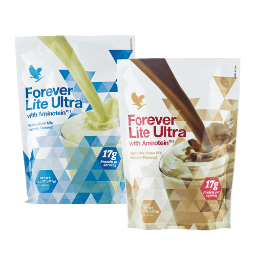
Forever Lite Ultra®
Incorporating a nutrient-dense shake like Forever Lite Ultra® (vanilla or chocolate – yum!) can be a convenient way to ensure you’re getting essential vitamins, minerals, and protein to support your energy levels and muscle health.
Or, ensuring good gut health during dietary changes is always smart – something like Forever Aloe Vera Gel® can be a soothing addition to your routine during your eating window.

Forever Aloe Vera Gel®
Can be a soothing addition to your routine during your eating window.
(Disclaimer: These products are intended to supplement a healthy diet, not replace meals entirely unless part of a specific plan.)
How long does it take for intermittent fasting to start working?
You might notice some changes like reduced bloating or more stable energy within the first week or two as your body adapts. Noticeable weight loss or significant changes in metabolic markers (like blood sugar or insulin) often take several weeks to a few months of consistent practice, combined with a healthy diet. Autophagy benefits are ongoing during fasting periods.
Can I exercise while intermittent fasting?
Yes! Many people exercise successfully while fasting. Some prefer working out just before breaking their fast to maximize fat burning. Others prefer exercising during their eating window when they have more fuel. Listen to your body – if you feel weak or dizzy exercising fasted, try shifting your workout time or having a small, easily digestible snack if exercising closer to your eating window. Staying hydrated is extra important.
Important Considerations: Intermittent Fasting for Women & Who Should Be Cautious
While intermittent fasting offers many potential benefits, it’s not universally suitable for everyone, and some groups need to approach it with extra care.
Intermittent Fasting for Women:
This is a hot topic, and rightly so. Women’s bodies and hormones can be more sensitive to significant shifts in energy intake or eating patterns.
- Potential Hormonal Impact: Some women report changes in their menstrual cycles (e.g., irregular periods, missed periods) when starting IF, especially more aggressive forms. This might be the body perceiving excessive stress or energy deficit.
- Listen Closely: It’s crucial for women to pay extra attention to their body’s signals. If you experience negative hormonal symptoms, consider:
- Shorter Fasting Windows: Maybe stick to 12-14 hour fasts instead of 16+.
- Less Frequent Fasting: Don’t fast daily; perhaps try IF a few days a week.
- Ensuring Adequate Calories: Make sure you’re eating enough nutrient-dense food during your eating window. Chronic under-eating combined with fasting can be problematic.
- Consulting a Healthcare Provider: Especially if you have pre-existing hormonal conditions (like PCOS, thyroid issues) or are trying to conceive.
- Pregnancy & Breastfeeding: Intermittent fasting is generally NOT recommended during pregnancy or while breastfeeding due to increased energy and nutrient needs.
(Resource): While research is still evolving, articles discussing intermittent fasting for women often highlight the need for a gentler approach. Look for resources from female health experts or registered dietitians specializing in women’s health.
Who Should AVOID Intermittent Fasting or Consult a Doctor FIRST:
- Individuals with a History of Eating Disorders: IF involves restriction and specific eating rules, which can be triggering or harmful for those with anorexia, bulimia, or binge eating disorder history. Avoid it.
- People Who Are Underweight (Low BMI): If you’re already underweight, further restricting calories or eating windows is not advisable without medical supervision.
- Children and Teenagers: Growing bodies have high energy and nutrient needs. IF is not recommended.
- Individuals with Type 1 Diabetes: Fasting can significantly impact blood sugar and insulin needs, requiring careful medical management. Do NOT attempt IF without close guidance from your endocrinologist.
- Those Taking Certain Medications: Especially medications that need to be taken with food or those affecting blood sugar or blood pressure. Discuss IF with your doctor to avoid interactions or complications.
- People with Certain Medical Conditions: Kidney disease, liver disease, complex heart conditions – always consult your doctor.
Why Might Someone Stop Intermittent Fasting?
You might see searches like “why i stopped intermittent fasting”. Common reasons include:
- Social Challenges: Difficulty aligning eating windows with family meals or social events.
- Negative Side Effects: Persistent fatigue, headaches, dizziness, irritability, sleep disturbances that don’t resolve.
- Feeling Overly Restricted: Some find the rules too mentally taxing long-term.
- Hormonal Issues (especially for women): As mentioned above.
- Not Seeing Desired Results: If not combined with healthy eating, results might stall.
- Underlying Health Condition: Discovering a condition where IF isn’t advised.
It’s okay if IF isn’t the right fit for you! It’s one tool among many for health improvement.
Can intermittent fasting cause nutrient deficiencies?
It can if your food choices during the eating window are poor or if your overall calorie intake becomes too low. That’s why focusing on nutrient-dense whole foods is critical.
If you consistently eat balanced meals within your window, nutrient deficiencies are less likely. Supplementing wisely (like with a good multivitamin or targeted nutrients, perhaps like…

Forever Fields of Greens®
For extra phytonutrients) during your eating window can help fill gaps if needed, but whole foods should always be the priority.
Beyond the Hype: Making Intermittent Fasting a Sustainable Part of a Healthy Lifestyle
So, we’ve navigated the confusing headlines, explored the intermittent fasting meaning, methods, and real intermittent fasting benefits. We’ve covered how to do intermittent fasting and who should be cautious.

What’s the big takeaway?
Intermittent fasting is a powerful tool, but it’s not a magic bullet.
Its effectiveness hinges on integrating it into an overall healthy lifestyle.
- Quality Over Quantity (Even with IF):
- Your intermittent fasting diet plan matters immensely. Filling your eating window with processed junk won’t lead to optimal health, even if you’re fasting for 16 hours.
- Prioritize whole foods: lean proteins, vegetables, fruits, healthy fats, fiber-rich carbs. Think vibrant and varied!
- It’s Part of a Bigger Picture:
- Combine IF with other healthy habits for synergistic effects:
- Regular Movement: Exercise helps build muscle, improve insulin sensitivity, and boost mood.
- Quality Sleep: Poor sleep messes with hunger hormones and overall health. Aim for 7-9 hours.
- Stress Management: Chronic stress can counteract the benefits of IF. Find healthy coping mechanisms (meditation, yoga, time in nature).
- Hydration: Crucial always, but especially when fasting.
- Combine IF with other healthy habits for synergistic effects:
- Sustainability is Key:
- The best intermittent fasting schedule is the one you can stick to long-term without feeling overly deprived or stressed.
- Don’t aim for perfection. Aim for consistency.
- Allow for flexibility for social situations or days when you just need a break. Life happens!
- Tune into your body’s signals and adjust your approach as needed over time. Your needs might change.
- Think Long-Term Health, Not Just Short-Term Fixes:
- Use IF as a strategy to support your overall well-being, improve metabolic health, and potentially enhance longevity – not just as a quick weight loss hack.
- Focus on building sustainable habits that nourish your body and mind.
Building a truly healthy lifestyle involves supporting your body from multiple angles. While intermittent fasting addresses when you eat, ensuring optimal nutrient absorption and gut health is also key. Products like…
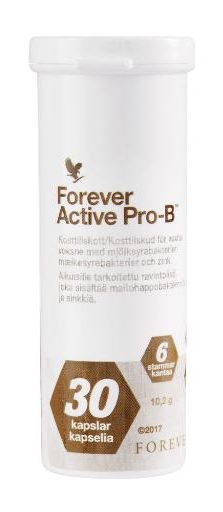
Forever Active Pro-B™
Can support a healthy digestive system, which is foundational for getting the most out of the nutritious foods you eat during your window.
And maintaining energy throughout the day, even with IF, is important – exploring natural energy support options might be beneficial.
Can I do intermittent fasting forever?
Many people adopt IF as a long-term lifestyle pattern. If you find a schedule that works well for you, feel good, maintain good health markers, and are consuming adequate nutrition, it can potentially be sustained indefinitely.
However, it’s always wise to periodically check in with your body and perhaps with a healthcare provider, especially as your health needs change over time (e.g., aging, changes in activity level, new health conditions).
Your Health Journey, Your Choice: The Final Word on Intermittent Fasting
So, back to that scary AHA headline that started this whole conversation.
Hopefully, you now see it for what it likely was: a misleading interpretation of weak, correlational data plagued by potential bias.
It’s a classic case of a sensational headline trumping careful scientific interpretation.
The real story, supported by much stronger evidence, is that intermittent fasting, when practiced correctly and appropriately, is an eating pattern with a range of potential health benefits.
From supporting weight management and improving metabolic health markers like insulin sensitivity, to potentially activating cellular cleanup processes and even benefiting brain and heart health (yes, intermittent fasting heart disease risk factors may actually improve for many!), it’s a tool worth understanding.
But remember:
- Correlation does NOT equal causation. Always question headlines based on observational data alone.
- Context matters. Who was in the study? When was the data collected? What other factors weren’t accounted for?
- Intermittent fasting is about when you eat, but what you eat during your eating window is still paramount. Focus on nutrient-dense whole foods.
- Listen to your body. Start slowly, choose a method that fits your life, and don’t push through genuine discomfort.
- It’s not for everyone. Be aware of contraindications and consult your doctor if you have underlying health conditions or concerns, especially regarding intermittent fasting for women or specific medical issues.
Ultimately, your health journey is yours to navigate. Intermittent fasting might be a fantastic tool for you, or it might not be the right fit.
The goal here at Vitaleap is to empower you with clear, evidence-based information so you can make informed choices.
Don’t let fear-mongering headlines derail your progress or curiosity. Dig deeper, understand the science, and choose strategies that truly support your long-term well-being.
Note
Taking control of your health is empowering. Whether you explore intermittent fasting or focus on other healthy habits, consistency and informed choices are key.
If you’re looking for high-quality products to support your overall wellness journey, from targeted nutrition to skincare, feel free to browse our curated selections and honest reviews of Forever Living Products right here on Vitaleap.
We’re here to support your path to vibrant health.




